Easter is always a very busy period in the Merzouga area. While March-May is already the high tourist season, Easter usually gets that extra amount of tourists that take over the entire area. Luckily, though, yet some people can behave quite stupidly while on holidays, we didn’t have any kind of issue with so many people around our study site.
But more than monitoring the restless moving of tourists around the area we are interested in something else. The captures at the station continue below the average, in very similar numbers as last year. We will do a more detailed comparison in the next post.
A few new species have reached the area the last few days, including the first captures of Whinchat Saxicola rubetra, Wood Warbler Phylloscopus sibilatrix, Western Orphean Warbler Curruca hortensis, Turtle Dove Streptopelia turtur and European Bee-eater Merops apiaster, and sightings of the firsts Spotted Flycatcher Muscicapa striata, Pied Flycatcher Ficedula hypoleuca and Garden Warbler Sylvia borin. We also had a fantastic adult male Greenland Northern Wheatear Oenanthe oenanthe leucorhoa, always a fascinating taxon.

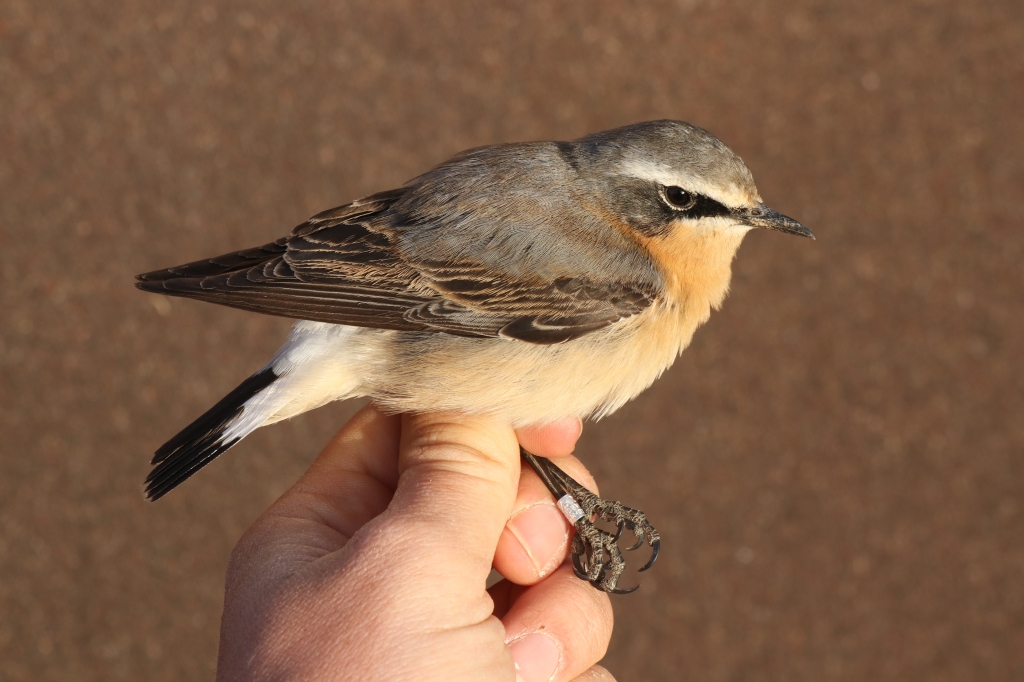
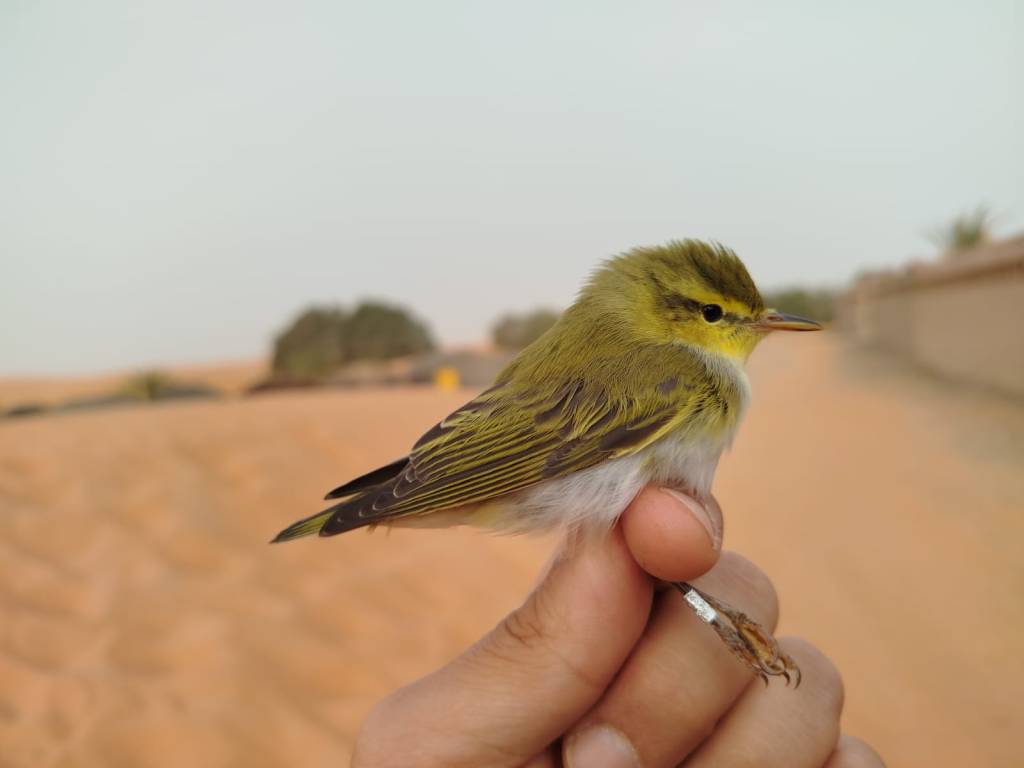
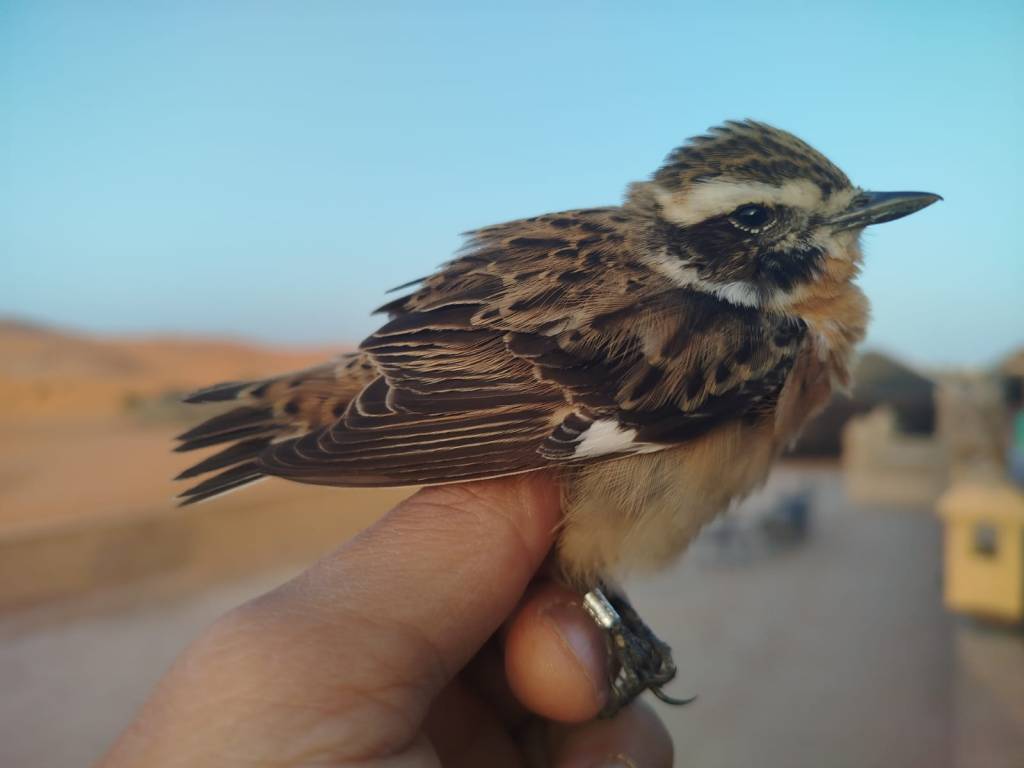
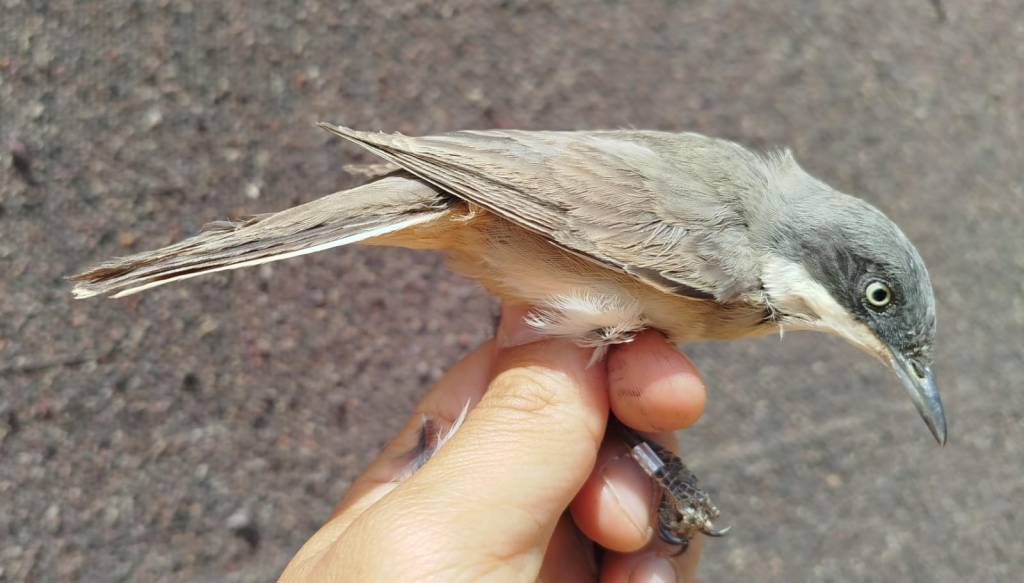
One of our regular visits to the palmeraie at Hassilabied produced another exciting finding: a Portuguese ringed Barn Swallow Hirundo rustica. Swallows are usually following a migratory strategy usually referred to as ‘fly and forage’, as they have the ability to eat in flight at the same time as moving. Thus, they usually perform short stopovers in the desert, staying only if their body condition is very lean. Swallows are particularly affected by sandstorms, that unable most of foraging activity and forces them to stop the movement unless they can fly away before they get trapped in.
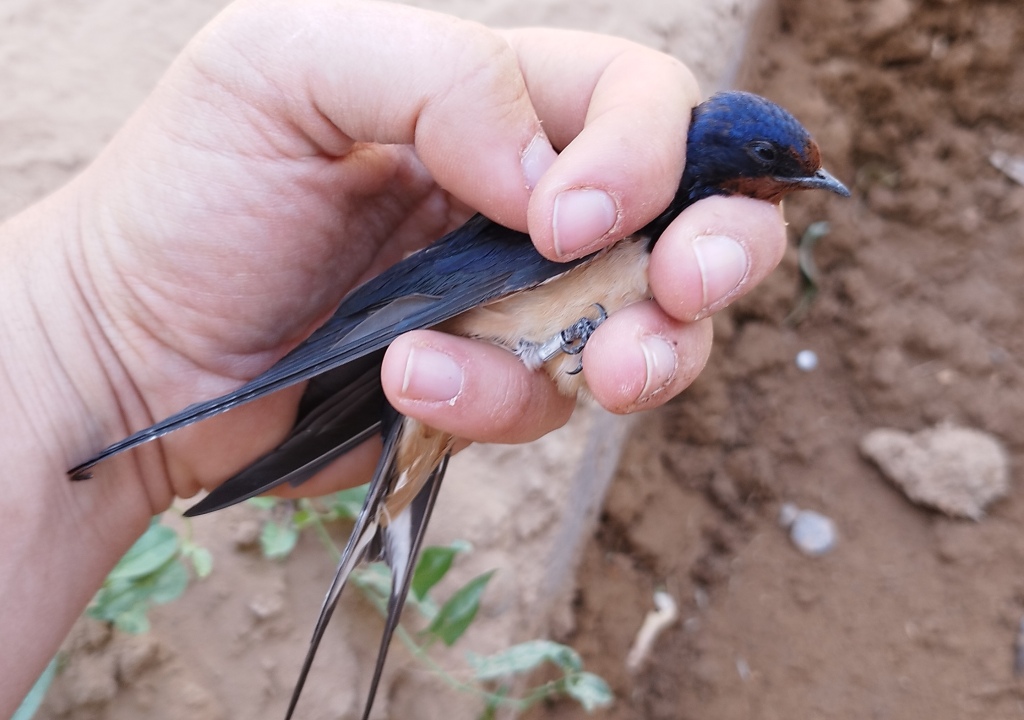
Two years ago we had the privilege to collaborate with Plimsoll Productions (@plimsollproductions on Instagram) on the making of an excellent documentary about the migration of the Barn Swallows between Africa and Europe. The series has been released under the name Incredible Animal Journeys, which can be seen for instance on Disney+. One episode is dedicated to the Barn Swallow, and you might recognise also us in Yasmina in the last episode. Thanks to the film crew and congrats for such amazing work!
For the first time at the station we’ve had a rather special Easter celebration. Nadine, Sophie and Marlene (part of our amazing team this year) prepared a fantastic surprise to the rest, in the shape of some very detailed painted Easter eggs. Painting eggs is quite a tradition in central and eastern Europe. Don’t miss them out! Thank you girls 🙂
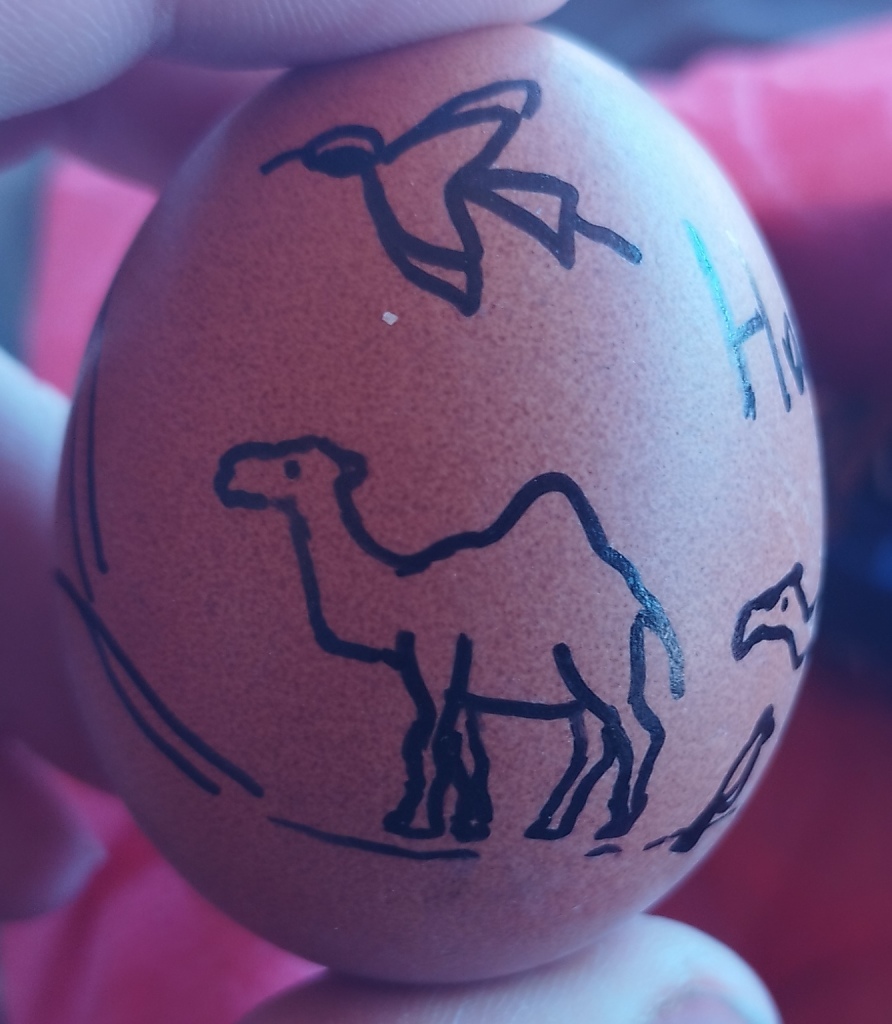
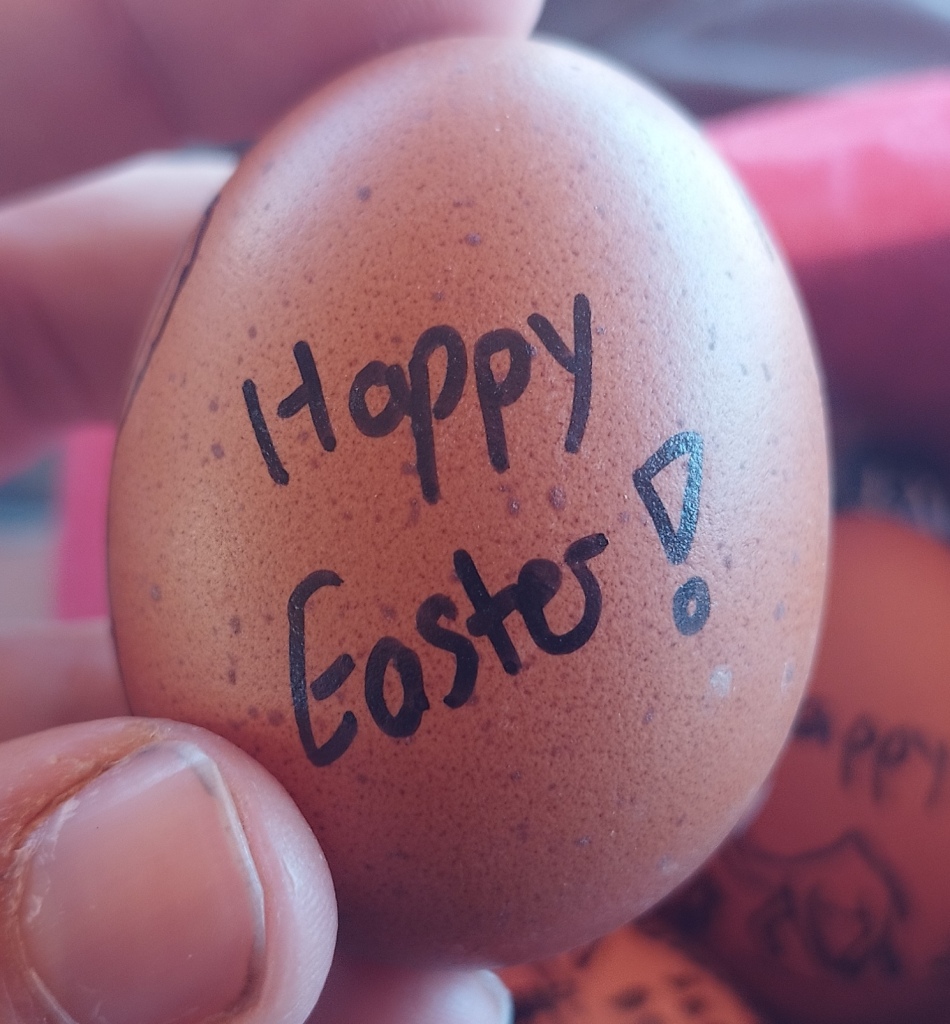
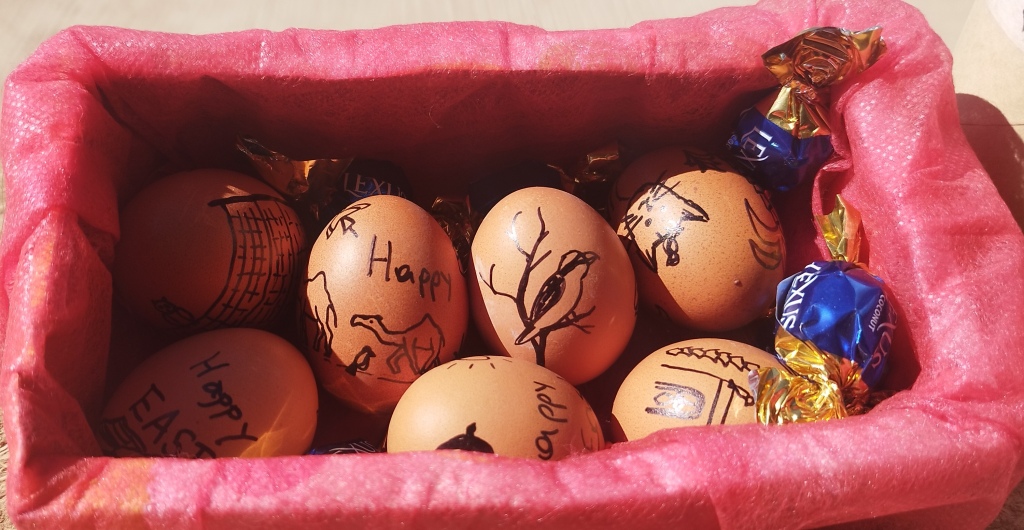
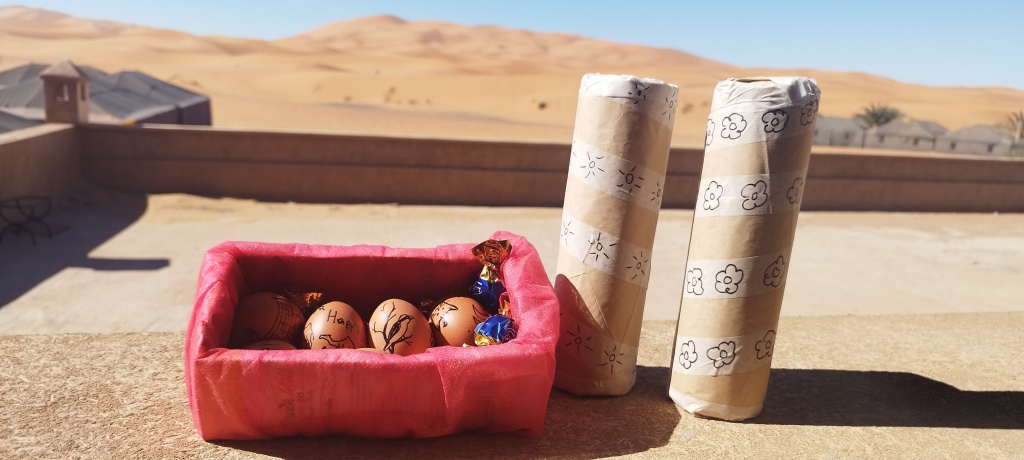
Talking about the team, some major changes are coming up at the station, with the ending of the stay for some of the core team since the start (Claire, Nadine, Sophie, Marlene and Marc), and we have welcomed again Laura, Bruna and Àlex at the station as the next team of ringers. Thank you all for the amazing work done, and we look forward to meet up together again!

Also we want to thank our volunteers Graham and Freddy for their help, as well as Manel, Núria and Filibert for visiting us these days.
Ah! Brown-necked Ravens Corvus ruficollis seem to have also found a way to enjoy their Easter eggs! They are excellent at finding Collared Dove Streptopelia decaocto nests and predating them…!
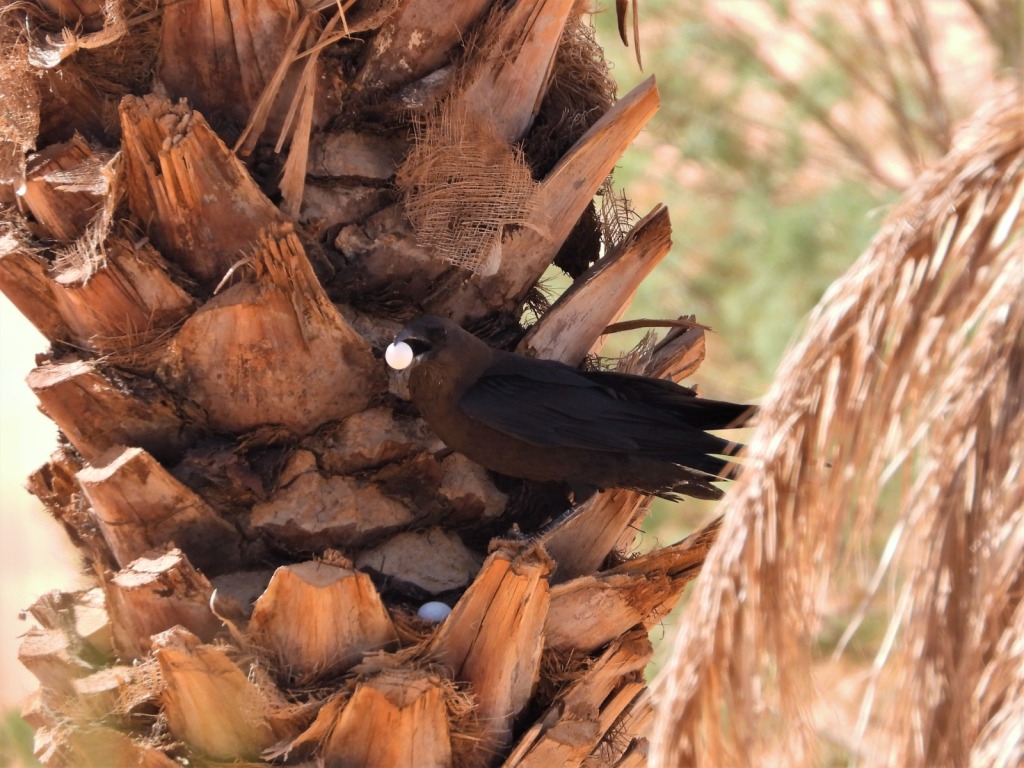
Setmana Santa sempre és un període ben animat a la zona de Merzouga. Durant els mesos de març a maig ja és habitualment la temporada alta turística a la zona, però per Setmana Santa sempre s’afegeix un extra de turistes. Afortunadament però, malgrat que algunes persones poden actuar de formes ben estúpides quan estan de vegades (i per a què no dir-ho, algunes ho fan sempre), no hem tingut cap entrebanc malgrat la gran afluència de gent als voltants de la zona d’estudi.
Però a banda de monitoritzar l’arribada constant de turistes a la zona estem interessats en altres coses. Les captures a l’estació continuen per sota de la mitjana, en nombres ben semblants als de l’any passat. En una propera entrada ho analitzarem més bé.
Algunes espècies noves han arribat a l’estació els darrers dies, com per exemple les primeres captures de bitxac rogenc Saxicola rubetra, mosquiter xiulaire Phylloscopus sibilatrix, tallarol emmascarat Curruca hortensis, tórtora Streptopelia turtur i abellerol Merops apiaster, i les primeres observacions de papamosques gris Muscicapa striata, mastegatatxes Ficedula hypoleuca i tallarol gros Sylvia borin. També hem capturat un còlit gris de la subespècie groenlandesa Oenanthe oenanthe leucorhoa, un tàxon sempre interessant.





En una de les nostres visites regulars al palmerar de Hassilabied hem fet una nova troballa ben interessant: una oreneta comuna Hirundo rustica anellada a Portugal! Les orenetes segueixen una estratègia de migració sovint denominada “fly and forage” (volant i alimentant-se), ja que tenen la capacitat de caçar en vol mentre avancen en la migració. És per això que normalment fan parades molt curtes al desert, només quedant-se si la seva condició corporal és mol dolenta. Les orenetes són especialment sensibles a les tempestes de sorra, que impedeix que puguin alimentar-se i les força a aturar-se, a no ser que puguin marxar volant lluny abans que arribi la pols.

Fa dos anys vam tenir el privilegi de poder col·laborar amb Plimsoll Productions (@plimsollproductions a Instagram) en la gravació d’un documental sobre la migració de l’oreneta comuna entre Àfrica i Europa. La sèrie es pot veure a Disney+ amb el nom Incredible Animal Journeys. Un episodi es destina a la migració de les orenetes, I també ens reconeixereu breument al darrer episodi. Moltes gràcies a l’equip de filmació I enhorabona per la feina fantàstica!
Per primer cop a l’estació hem fet una celebració ben especial per Setmana Santa. La Nadine, la Sophie i la Marlene (part del nostre genial equip d’enguany) ens han preparat una sorpresa fantàstica en forma d’uns ous de Pasqua decorats amb tota mena de detall. No us els perdeu! Al centre i est d’Europa és una pràctica habitual, el diumenge de Setmana Santa, de pintar ous durs de colors o amb patrons. Moltes gràcies noies! 🙂




Parlant de l’equip, alguns canvis importants tenen lloc aquests dies, amb el final de l’estada d’alguns dels membres des de l’inici de la temporada (Claire, Nadine, Sophie, Marlene i Marc), i hem donat la benvinguda a la Laura, la Bruna i l’Àlex a l’estació, que seran els propers responsables de l’anellament. Moltes gràcies per tota la bona feina feta, i esperem tornar-nos a trobar aviat!

També volem agrair als voluntaris Graham i Freddy la seva ajuda, així com al Manel, la Núria i al Filibert per visitar-nos aquests dies.
Ah! Els corbs del desert Corvus ruficollis semblen haver trobat una forma de gaurir dels ous de Pasqua també. Són molt eficients trobant nius de tórtora turca Streptopelia decaocto i depredant-los…!


